THE MIDDLE EAST 2011: THE BANKS
By Justin Keay
The current market conditions may have prompted slowing in their expansion plans, but the Middle East’s banks are still building for the future.
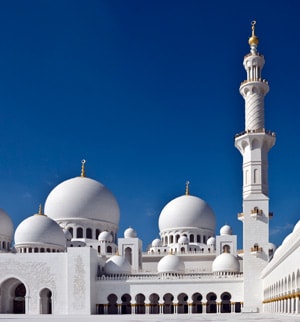
Until late 2010, the sentiment of most Middle Eastern bank CEOs was that cautious lending, an aversion to securitization, strong management, firm regulation and sheer luck had helped them successfully steer through the global crisis that so damaged many of their Western counterparts. Although the picture varies country by country, last year was a time for consolidation, fixing damage to balance sheets and revenue streams and looking ahead to what then looked like a more stable future, underpinned by an ongoing recovery in energy prices and the global economy. Many banks reduced loan loss provisions over 2010 compared with 2009 and also moved to reduce operating expenses, reflecting the restructuring many undertook in the wake of the global downturn. Some saw profits decline, notably in the UAE where the bursting of the Dubai property bubble had a significant impact.
Emirates NBD, created following the merger of Emirates Bank and the National Bank of Dubai in late 2007 and now the largest banking group in the Middle East, is a case in point. Total income last year was 10% down at AED9.7 billion ($2.6 billion) while net profits dropped to AED2.2 billion from AED3.3 billion in 2009 (but operating costs were down 14%). By contrast, Qatari, Saudi and Kuwaiti banks saw profits rise, due partly to their involvement in funding ambitious infrastructure projects but also to a growing deposit base, reflecting rising personal wealth. Banks in North Africa also had a generally good year: Al Baraka Egypt Bank, for example, saw its net profits double to 107 million Egyptian pounds ($18.2 million).
Having dodged the bullet of the global economic crisis, though, banks must now grapple with even greater uncertainty, as their businesses experience the impact of the Arab Spring. For many banks the effect has been immediate, with ratings agencies moving to downgrade them, in many cases in the wake of earlier decisions to downgrade their respective home countries’ sovereign ratings. In early February, Moody’s downgraded five Egyptian banks (National Bank of Egypt, Banque Misr, Banque du Caire, Commercial International Bank and the Bank of Alexandria), citing concerns about largely domestic credit portfolios amid growing macroeconomic uncertainty and doubts about Egypt’s ability to support its banks should this become necessary. In neighboring Tunisia, where the Arab Spring started in December 2010, Zitouna, Tunisia’s first Islamic bank, was nationalized because of its close connection to ousted president Zine El Abidine Ben Ali, and ratings agencies have downgraded several local banks and warned that further downgrades are possible.
 |
|
Doha Bank’s R. Seetharaman: “We are facing a new generation of banking” |
Elsewhere however, particularly in the Gulf, where contagion from the crisis has so far been less, but also in Lebanon (no stranger to uncertainty), the mood has been more sanguine. “Most banks in the GCC area are pretty solid—I don’t see any signs of collapse,” says Rohit Walia, CEO of Bank Sarasin-Alpen (ME). “Sure, they may look set to make less money—maybe 30% or so less than before—but there are still profits here that are not to be sneezed at.”
Freddie Baz, CFO and chief strategist of Bank Audi, one of Lebanon’s leading banks, is also optimistic, arguing that the eventual outcome will be greater transparency and more business, although the immediate uncertainty has prompted a shift in bank strategy in the region from expansion to consolidation. “Yes, we are slowing down our expansion, but if the longer-term outlook is better, who cares if plans are delayed by a few years?” he comments. “Our philosophy is to build a stable, solid franchise for the long term.”
The general feeling is that banks with a broad spread of business, both at home and in foreign markets, and a proactive but cautious investment strategy look best-placed to ride out the current uncertainties. Many banks seem to be taking a similar approach: focus on developing markets and capabilities; boost brand awareness; tackle any bottlenecks; and hold one’s nerve until the outlook becomes clearer.
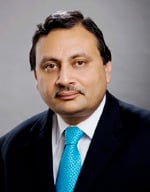 |
|
Walia of Bank Sarasin-Alpen (ME): Family businesses will remain resilient |
Qatar-based Doha Bank is a case in point. With total assets of almost $13 billion, and deposits of $8.5 billion, this highly rated bank has the largest national market share of trade finance, as well as 36 branches around the country. Chief executive R. Seetharaman argues that, despite the uncertainties, the economic and business outlook for the Middle East and North Africa (MENA) region remains good, and banks like his should be well placed to benefit from future opportunities, particularly given the firm financial regulation prevailing in a country such as Qatar, where the bank capital adequacy ratio is 15%. “We are facing a new generation of banking with such innovations as Web banking and [mobile banking], as well as demand for new products. We are well placed to meet this,” he says. Seetharaman says the bank is expanding its product and service range and points to the growth of two new businesses, Doha Bank Assurance (a general insurance company) and DB Capital, which is scheduled to commence operations soon and to focus on asset management.
“Our aim is for DB to move from being a local to regional to global performer: We want to be a global enterprise. Increasingly, people are not location-centric but information-centric. If you remain a conventional performer, you will not get the customers’ attention,” he says.
Banks Spread Their Wings
Building up a strong regional presence backed by a recognizable, respected brand is also part of Qatar National Bank’s (QNB) strategy, according to chief economist Mohamad Moabi. With more than 40% of Qatar’s bank sector assets, a presence in 24 countries and an increasingly critical role in funding key infrastructure developments, QNB sees its main regional competitors as the National Bank of Kuwait, the National Bank of Abu Dhabi and the National Commercial Bank of Saudi Arabia. “Whether you look at assets, loans or profits we are moving up the rankings—and fast,” he says.
Building brand awareness and looking beyond the region—to the Far East—is also likely to remain an important part of Emirates NBD’s strategy, according to CEO Rick Pudner. Speaking after the bank’s 2010 results announcement, he pointed to its 135 branches, its expanded retail presence in Abu Dhabi and many of the recent steps taken, including strengthening the balance sheet (the capital adequacy ratio is now above 12%) and stress-testing all the risks in its portfolio. With Emirates NBD expected soon to finalize its takeover of Network International, one of the region’s largest payment card processors, Pudner says he is looking for 5% loan growth this year after an 8% contraction last year. As well as focusing on its traditional markets, the bank will be looking east for new business.
“Islamic finance is developing in a way that allows us to conduct a broad range of activities”
“Many of the ongoing political changes in the region—particularly in Egypt—will make valuations more interesting” – Shahzad Shahbaz, QInvest
Pudner suggests that his bank, like Dubai, is ripe for a surge. “We feel we have put the bank into a strong position and are looking for growth opportunities,” he says. “After going through this period of de-risking, we want to grow the business.”
Growth is the cornerstone of Doha-based QInvest, a shariah-compliant institution that became fully operational only in 2009 but now seems to be racing to make up for lost time. Headquartered in the high-tech Tornado Tower in West Bay, the city’s fast-growing financial center, QInvest is a full-service investment bank offering asset and wealth management as well as brokerage services. It is underpinned by $750 million in paid-in capital, with Qatar Islamic Bank owning 46.6% and a range of institutions and high-net-worth individuals owning the remainder. It is focusing its attention not only on the MENA region but on Turkey, South Asia, India and Malaysia. Two recent investments—in India’s Ambit Capital and the mid-range UK stockbroker Panmure Gordon—confirm that, despite its Islamic tag, it is determined not to confine its activity to the Islamic world. However, this will clearly remain the driving force of its growth strategy, with QInvest, which has already won numerous awards for shariah-compliant banking, having recently secured a license to operate in Saudi Arabia. A recent ruling that conventional lenders in Qatar must close their Islamic banking operations by the end of 2011 will also clearly benefit QInvest, but the bank argues that the ongoing evolution of shariah-compliant financial activity from niche to mainstream will be its biggest boon.
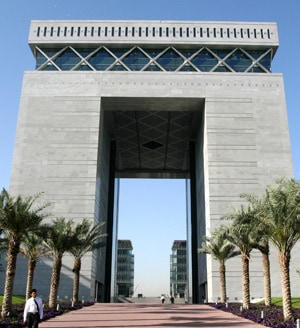 |
|
Dubai’s International Finance Centre: Anticipating a surge in business |
“Islamic finance is developing in a way that allows us to conduct a broad range of activities,” says CEO Shahzad Shahbaz, stressing that organic growth will drive QInvest, although it will also stay on the lookout for acquisition opportunities.
“These are often hard to find, but we are always open to possibilities: I am confident that many of the ongoing political changes in the region—particularly in Egypt—will make valuations more interesting for us,” he predicts.
QInvest is not the only institution, by any means, focusing on high-net-worth individuals in the region. Sarasin, a subsidiary of Bank Sarasin-Alpen, established in Switzerland in 1841, opened its first branch in the Middle East in 2005 with separate investment bank and private bank functions, and has since grown by around two branch offices a year. Headquartered in Dubai, it has branches in Bahrain, Abu Dhabi and five other locations. Its majority shareholder is Rabobank, which is Triple A-rated and recently placed sixth in the Global Finance list of the world’s safest banks, but Sarasin stresses its traditional, private bank roots. “Our focus in the region is family businesses. Whatever happens, they make money, and this has a positive impact on our business. We believe this will remain resilient,” says CEO Walia.
He attributes much of Sarasin’s success to adherence to old-fashioned principles: Most investing is into fixed income products, with exotics never featuring on its investment horizon. Returns are single-digit. Walia believes the client’s needs must always come first. “Suitcase banking is dead. A client will see you when he wants to, not when you want to see him. That is why we stress the importance of having a full office where our clients live, and not just a rep office, so we can always be there for them,” he notes.
Walia says that despite the disturbances across the region, he plans to continue Bank Sarasin’s expansion program “one country at a time,” maintaining the dual investment/private bank approach, with Saudi Arabia, Egypt, Jordan and Turkey all on the radar.
These countries and others have been driving Bank Audi’s profits forward in recent years, with its regional franchise approach transforming it into Lebanon’s largest bank in terms of assets and deposits: not bad, considering that only three years ago Blom Bank was bigger. Chief strategist and CFO Baz admits Bank Audi’s business in Egypt was a significant driver of its growth, with $3 billion of business, 160,000 customers and 31 branches built up in just three years following the acquisition of a local bank. Syria has also been doing very well, with some $2 billion in assets. Bank Audi has also built up substantial business in Jordan, Qatar and the UAE.
Baz says the deposit base looks likely to continue growing in all franchise operations, adding that Bank Audi tends to be viewed as a reliable, safe port in a storm. The results of stress testing have been reassuring, although he admits now is a time for consolidation rather than the pursuit of more growth. “We had been diversifying our range of services but are now freezing development. The crisis will therefore affect us, but only in terms of time rather than losses,” he says. He attributes this to Bank Audi’s “always conservative” lending policy, which has resulted in a loan-to-asset ratio of 25% and a loan-to-deposit ratio of 32%.
“We have very limited risk appetite, compared even to our peers in the GCC, where these ratios are closer to 80-90%. Typically we lend to corporates with high value-added, and this won’t change,” he says.
Challenges Ahead
The regional uncertainty may loom large at present, but the Middle East’s banks will face other challenges in the coming year. Many banks see the need for more SME/private sector business, which in most countries has been growing much slower than government-sponsored activity; some even see a need for the private sector to get involved in some of the large infrastructure projects.
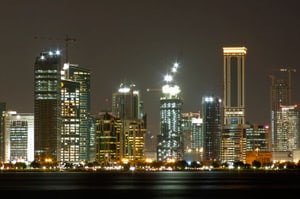 |
|
Building a brighter future: Doha’s constantly changing skyline illustrates the pace of development in the Gulf |
Although regulation throughout the region has been generally effective, with little fallout from the global securitization problems, banks are hoping for more coordination between regulators. This is particularly so in such countries as Qatar, where finance is a fast-growing activity and institutions such as the Qatar Exchange have considerable regional ambitions.
“Lack of integration between regulators is a concern. The central bank, the QFCRA and QFMA [the local regulators] have all been in discussion for a long while, but they need to act to prevent the emergence of any systemic problems,” says Doha Bank’s Seetharaman.
The other two challenges are perennial ones, with banks as concerned as ever that their perpetually evolving information and communications technology and staff requirements are met. The latter is often seen as the biggest challenge, particularly in countries such as Saudi Arabia, where secondary schools and universities have traditionally been focused on religious and other studies at the expense of those that would serve the financial sector and indeed, the broader economy. Some point to the Qatar Foundation, a huge nonprofit organization that spends large sums to attract Western universities to set up remote campuses in Qatar—and whose mission is “to prepare the people of Qatar and the region to meet the challenges of an ever-changing world and make Qatar a leader in innovative education and research”—as the model to copy.
As the upheavals continue, banks must be hoping governments move to boost training in areas like finance as part of a broader move toward meeting the aspirations of the region’s disaffected youth.
Focused On The Middle East’s Potential: Standard Chartered
If V. Shankar, Standard Chartered’s CEO for the Middle East, Africa, Europe and the Americas, is unsettled by the unfolding events in the Middle East, he does a good job of hiding it. Sitting in his office in the Dubai International Financial Centre, he appears sanguine, arguing that wealth inequalities, coupled with high unemployment, rising food prices and inflation, made the Arab Awakening almost inevitable.
“We are very positive about the region. The changes will lead to greater transparency, better institutions and thus more opportunities for banks,” he says.
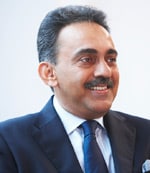 |
|
Shankar: Very positive about region |
Standard Chartered, it must be said, has been doing pretty well in the Middle East, where it has been active now for many years (it has been in Qatar for over 60 years, for example, and Bahrain for 90 years.)
It now employs some 2,600 people in the UAE alone and has elevated Dubai to the status of a regional hub, alongside London and Singapore. Dynamic wholesale and retail activity in such countries as Qatar, Bahrain and the UAE pushed operating profits up some 130% last year to $841 million (operating profits in Europe and the Americas actually fell). This means the Middle East is now a sizable contributor to the bank’s total pretax profit of $6.1 billion (against $5.1 billion in 2009) and looks likely to grow further. The bank recently acquired a capital markets license for Saudi Arabia and opened its first office in Riyadh. Although its international competitors include the likes of HSBC and UBS, among Middle East regional banks its only real competition now comes from Emirates NBD and the National Bank of Abu Dhabi.
“In times of uncertainty and crisis we usually improve our positioning, because we make sure we are there when clients need us. For example, during Dubai’s recent crisis, many of our rivals left. We stood by our clients. Our strap line is that we are here for good, and the longevity of our presence supports that,” he says.
Although retail business has been performing well, wholesale business has been the biggest driver of growth. Standard Chartered has demonstrated a clear understanding of the region’s evolving business trends, enabling it to focus on lucrative areas such as cross-border trade and investment. Shankar says the fact that the Middle East is now trading less with Europe and more with Africa and Asia is also benefiting his bank because of its strong presence and track record on both continents. He points to Standard Chartered’s involvement in a number of recent big deals—the UAE’s Al-Futtaim Group’s acquisition of Robinson’s department store in Singapore and Sembcorp Singapore’s ongoing construction of a $1 billion water and power plant in Salalah, Oman, for instance—as examples where its international reputation, expertise and reach has translated into solid business.
Shankar says the pattern of Middle East trade and investment will continue to evolve. “Although 75% of this region’s sovereign wealth fund assets are in the West, an increasing share is going into the Middle East—into infrastructure and other projects—and to Asia and Africa. In the last, we are seeing sectors like agriculture, mining and infrastructure all benefit,” he says.
As regards the Middle East, though, he says he is very comfortable with Standard Chartered’s presence. “We are looking to substantially improve our size and profitability here—the opportunities remain considerable.”
Supplement content:


